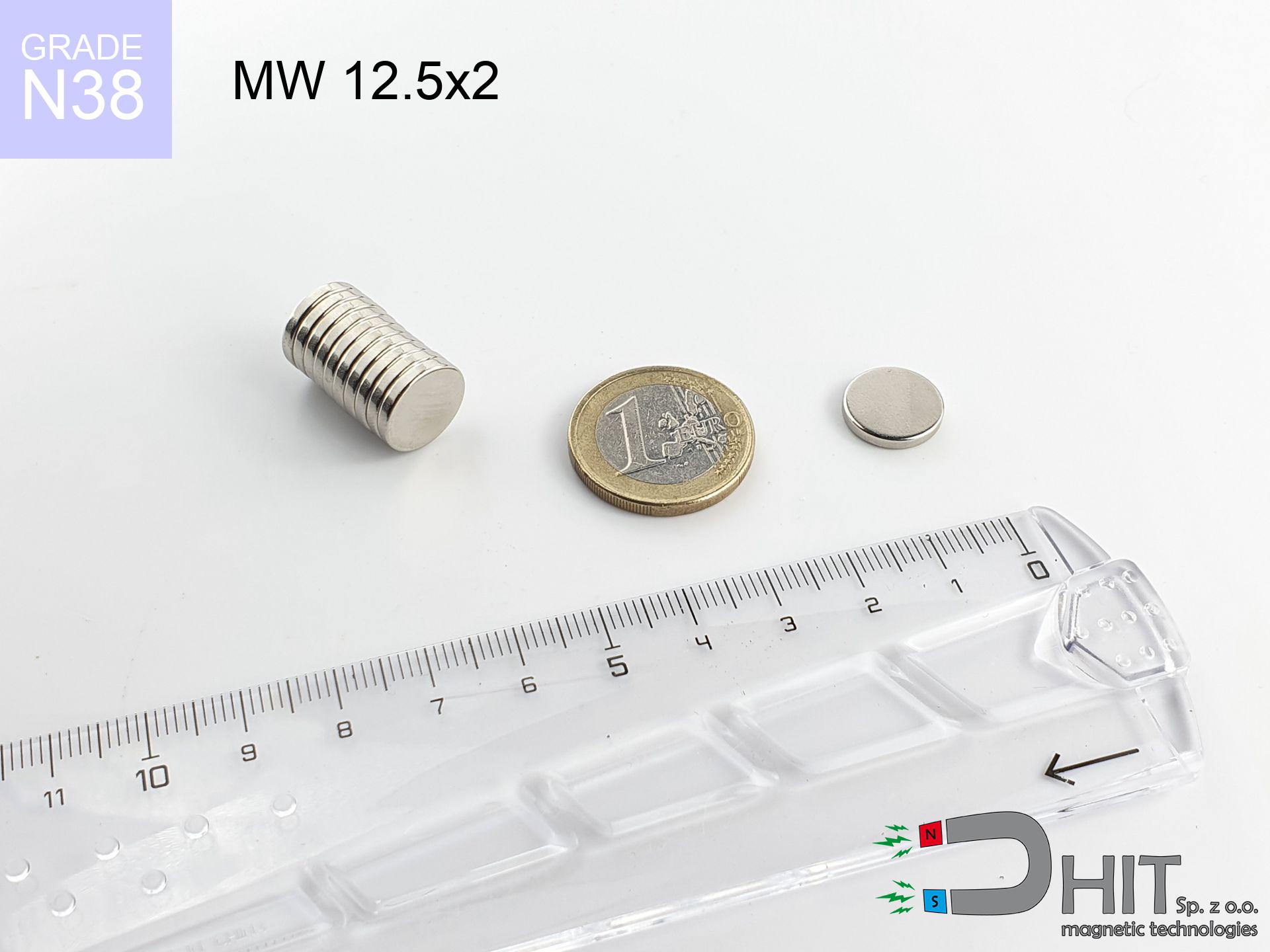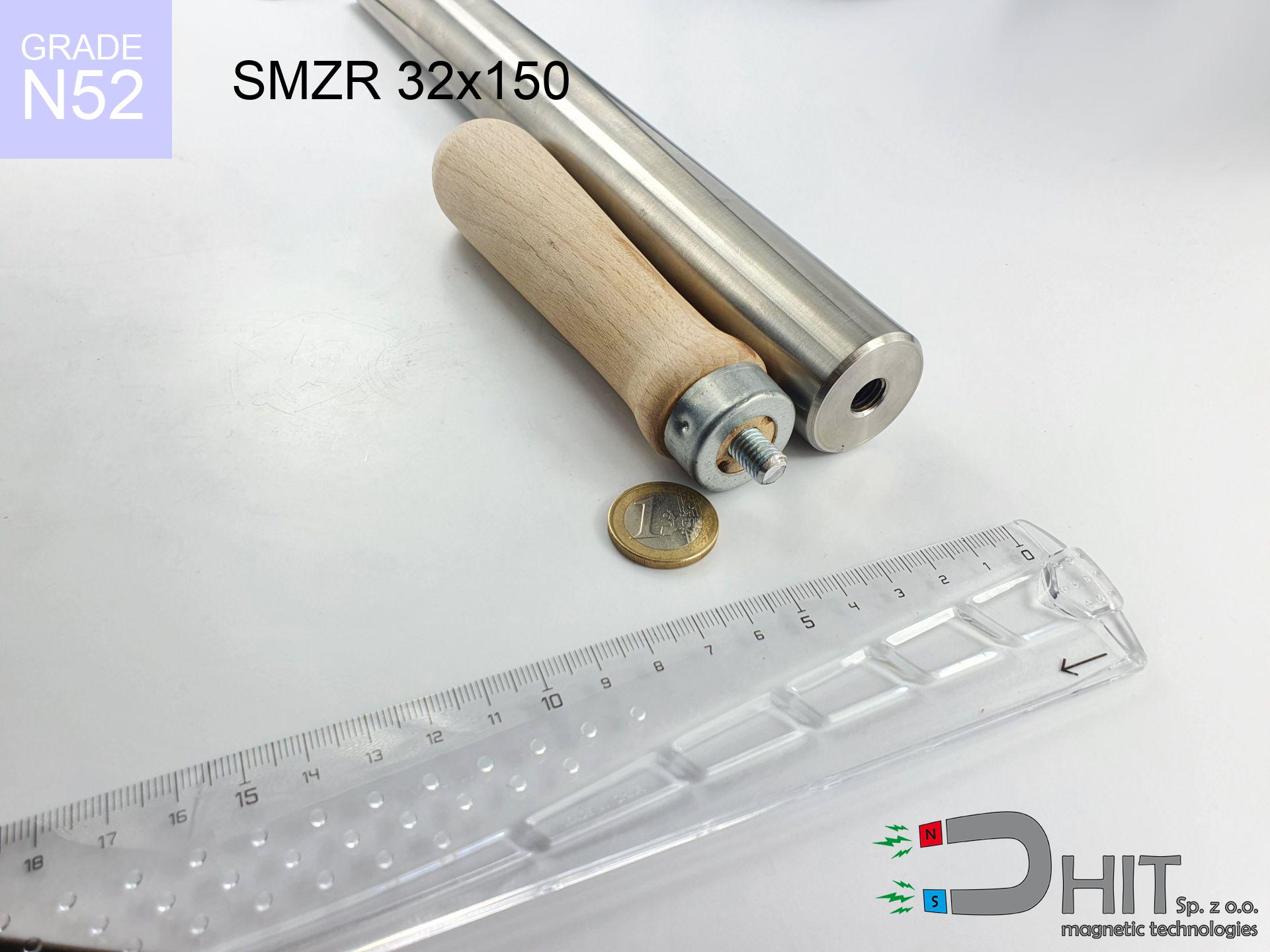SMZR 32x125 / N52 - magnetic separator with handle
magnetic separator with handle
Catalog no 140238
GTIN/EAN: 5906301813460
Diameter Ø
32 mm [±1 mm]
Height
125 mm [±1 mm]
Weight
690 g
Magnetic Flux
~ 10 000 Gauss [±5%]
430.50 ZŁ with VAT / pcs + price for transport
350.00 ZŁ net + 23% VAT / pcs
bulk discounts:
Need more?
Pick up the phone and ask
+48 888 99 98 98
if you prefer contact us using
inquiry form
through our site.
Strength as well as appearance of magnetic components can be estimated with our
online calculation tool.
Orders submitted before 14:00 will be dispatched today!
Technical parameters of the product - SMZR 32x125 / N52 - magnetic separator with handle
Specification / characteristics - SMZR 32x125 / N52 - magnetic separator with handle
| properties | values |
|---|---|
| Cat. no. | 140238 |
| GTIN/EAN | 5906301813460 |
| Production/Distribution | Dhit sp. z o.o. |
| Country of origin | Poland / China / Germany |
| Customs code | 85059029 |
| Diameter Ø | 32 mm [±1 mm] |
| Height | 125 mm [±1 mm] |
| Weight | 690 g |
| Material Type | Stainless steel AISI 304 / A2 |
| Magnetic Flux | ~ 10 000 Gauss [±5%] |
| Size/Mount Quantity | 2xM8 |
| Polarity | circumferential - 4 poles |
| Casing Tube Thickness | 1 mm |
| Manufacturing Tolerance | ±1 mm |
Magnetic properties of material N52
| properties | values | units |
|---|---|---|
| remenance Br [min. - max.] ? | 14.2-14.7 | kGs |
| remenance Br [min. - max.] ? | 1420-1470 | mT |
| coercivity bHc ? | 10.8-12.5 | kOe |
| coercivity bHc ? | 860-995 | kA/m |
| actual internal force iHc | ≥ 12 | kOe |
| actual internal force iHc | ≥ 955 | kA/m |
| energy density [min. - max.] ? | 48-53 | BH max MGOe |
| energy density [min. - max.] ? | 380-422 | BH max KJ/m |
| max. temperature ? | ≤ 80 | °C |
Physical properties of sintered neodymium magnets Nd2Fe14B at 20°C
| properties | values | units |
|---|---|---|
| Vickers hardness | ≥550 | Hv |
| Density | ≥7.4 | g/cm3 |
| Curie Temperature TC | 312 - 380 | °C |
| Curie Temperature TF | 593 - 716 | °F |
| Specific resistance | 150 | μΩ⋅cm |
| Bending strength | 250 | MPa |
| Compressive strength | 1000~1100 | MPa |
| Thermal expansion parallel (∥) to orientation (M) | (3-4) x 10-6 | °C-1 |
| Thermal expansion perpendicular (⊥) to orientation (M) | -(1-3) x 10-6 | °C-1 |
| Young's modulus | 1.7 x 104 | kg/mm² |
Table 1: Rod construction
SMZR 32x125 / N52
| Parameter | Value | Description / Unit |
|---|---|---|
| Diameter (Ø) | 32 | mm |
| Total length | 125 | mm (L) |
| Active length | 105 | mm |
| Section count | 4 | modules |
| Dead zone | 20 | mm (Blaszka 2mm + Gwint 18mm) |
| Weight (est.) | ~764 | g |
| Active area | 106 | cm² (Area) |
| Housing material | AISI 304 | 1.4301 (Inox) |
| Surface finish | Ra < 0.8 µm | Polished |
| Temp. class | 80°C | Standard (N) |
| Force loss (at max °C) | -12.8% | Reversible loss (physics) |
| Force (calculated) | 37 | kg (theor.) |
| Induction (surface) | ~9 500 | Gauss (Max) |
Chart 2: Field profile (4 sections)
Chart 3: Temperature performance
Elemental analysis
| iron (Fe) | 64% – 68% |
| neodymium (Nd) | 29% – 32% |
| boron (B) | 1.1% – 1.2% |
| dysprosium (Dy) | 0.5% – 2.0% |
| coating (Ni-Cu-Ni) | < 0.05% |
Ecology and recycling (GPSR)
| recyclability (EoL) | 100% |
| recycled raw materials | ~10% (pre-cons) |
| carbon footprint | low / zredukowany |
| waste code (EWC) | 16 02 16 |
Other products
Advantages and disadvantages of neodymium magnets.
Pros
- They virtually do not lose strength, because even after ten years the decline in efficiency is only ~1% (according to literature),
- They retain their magnetic properties even under strong external field,
- In other words, due to the glossy finish of nickel, the element is aesthetically pleasing,
- Neodymium magnets achieve maximum magnetic induction on a their surface, which increases force concentration,
- Due to their durability and thermal resistance, neodymium magnets can operate (depending on the form) even at high temperatures reaching 230°C or more...
- Thanks to modularity in forming and the ability to customize to client solutions,
- Versatile presence in high-tech industry – they are utilized in HDD drives, brushless drives, medical equipment, also modern systems.
- Thanks to concentrated force, small magnets offer high operating force, in miniature format,
Cons
- They are prone to damage upon heavy impacts. To avoid cracks, it is worth protecting magnets using a steel holder. Such protection not only protects the magnet but also increases its resistance to damage
- We warn that neodymium magnets can reduce their strength at high temperatures. To prevent this, we suggest our specialized [AH] magnets, which work effectively even at 230°C.
- They rust in a humid environment. For use outdoors we recommend using waterproof magnets e.g. in rubber, plastic
- Due to limitations in creating threads and complicated shapes in magnets, we propose using casing - magnetic mount.
- Health risk resulting from small fragments of magnets pose a threat, when accidentally swallowed, which gains importance in the context of child health protection. Additionally, tiny parts of these magnets can disrupt the diagnostic process medical after entering the body.
- Due to expensive raw materials, their price exceeds standard values,
Pull force analysis
Detachment force of the magnet in optimal conditions – what affects it?
- on a base made of mild steel, perfectly concentrating the magnetic field
- possessing a thickness of minimum 10 mm to ensure full flux closure
- with an polished contact surface
- under conditions of no distance (metal-to-metal)
- under axial force vector (90-degree angle)
- at room temperature
Lifting capacity in real conditions – factors
- Air gap (between the magnet and the plate), because even a tiny distance (e.g. 0.5 mm) can cause a drastic drop in force by up to 50% (this also applies to varnish, rust or debris).
- Direction of force – maximum parameter is obtained only during pulling at a 90° angle. The force required to slide of the magnet along the plate is usually many times smaller (approx. 1/5 of the lifting capacity).
- Metal thickness – the thinner the sheet, the weaker the hold. Part of the magnetic field passes through the material instead of converting into lifting capacity.
- Steel grade – the best choice is pure iron steel. Cast iron may generate lower lifting capacity.
- Plate texture – ground elements ensure maximum contact, which increases force. Rough surfaces weaken the grip.
- Operating temperature – NdFeB sinters have a negative temperature coefficient. When it is hot they lose power, and at low temperatures they can be stronger (up to a certain limit).
Lifting capacity was assessed using a polished steel plate of suitable thickness (min. 20 mm), under vertically applied force, whereas under attempts to slide the magnet the load capacity is reduced by as much as 75%. Moreover, even a slight gap between the magnet and the plate reduces the lifting capacity.
Precautions when working with neodymium magnets
Danger to the youngest
Neodymium magnets are not toys. Eating multiple magnets can lead to them pinching intestinal walls, which poses a critical condition and requires urgent medical intervention.
Electronic hazard
Device Safety: Neodymium magnets can damage data carriers and delicate electronics (heart implants, hearing aids, mechanical watches).
ICD Warning
People with a heart stimulator have to maintain an large gap from magnets. The magnetism can interfere with the operation of the life-saving device.
Caution required
Before starting, read the rules. Sudden snapping can break the magnet or hurt your hand. Think ahead.
Finger safety
Risk of injury: The pulling power is so immense that it can cause blood blisters, crushing, and broken bones. Use thick gloves.
Shattering risk
NdFeB magnets are ceramic materials, meaning they are very brittle. Clashing of two magnets leads to them cracking into small pieces.
Maximum temperature
Do not overheat. Neodymium magnets are sensitive to temperature. If you need operation above 80°C, inquire about special high-temperature series (H, SH, UH).
Phone sensors
GPS units and smartphones are extremely sensitive to magnetic fields. Direct contact with a powerful NdFeB magnet can decalibrate the internal compass in your phone.
Nickel allergy
Medical facts indicate that the nickel plating (standard magnet coating) is a potent allergen. If you have an allergy, refrain from direct skin contact and opt for versions in plastic housing.
Fire risk
Combustion risk: Neodymium dust is highly flammable. Do not process magnets in home conditions as this may cause fire.




![SM 32x500 [2xM8] / N42 - magnetic separator SM 32x500 [2xM8] / N42 - magnetic separator](https://cdn3.dhit.pl/graphics/products/sm-32x500-2xm8-jan.jpg)



